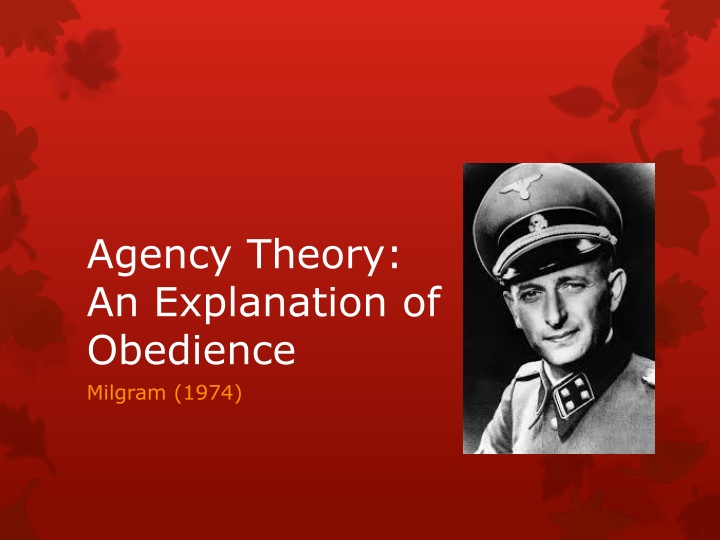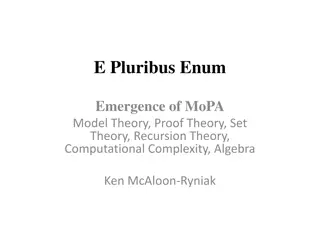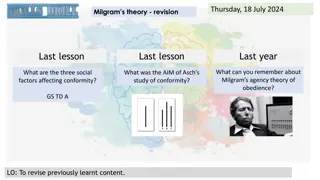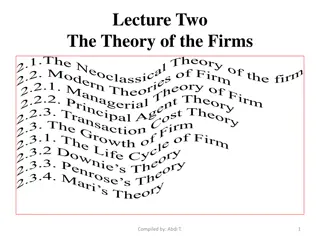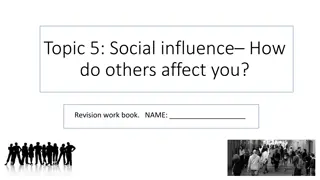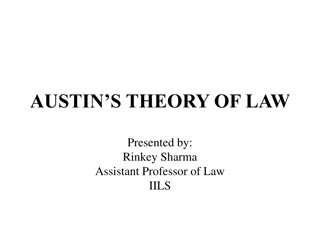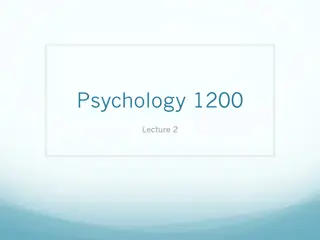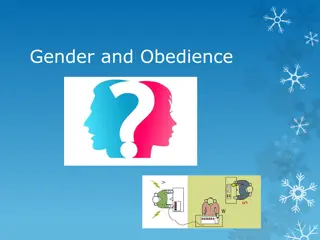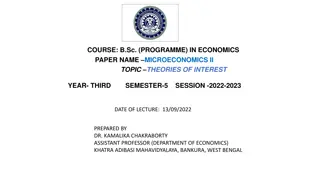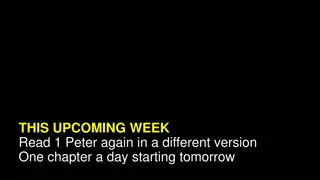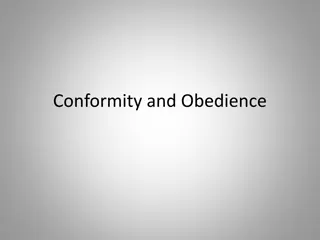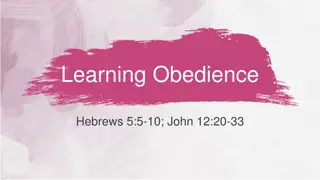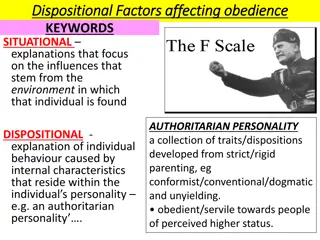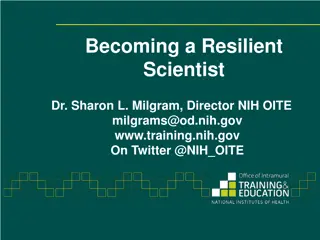Milgram's Agency Theory of Obedience
Milgram's Agency Theory explains how obedience to authority and adherence to rules contribute to social harmony and stability. Individuals may transition between the agentic state, where they follow orders unquestioningly, and the autonomous state, where they act independently and take responsibility for their actions. Examples from Milgram's research and real-life scenarios illustrate the impact of these states on behavior.
Download Presentation

Please find below an Image/Link to download the presentation.
The content on the website is provided AS IS for your information and personal use only. It may not be sold, licensed, or shared on other websites without obtaining consent from the author.If you encounter any issues during the download, it is possible that the publisher has removed the file from their server.
You are allowed to download the files provided on this website for personal or commercial use, subject to the condition that they are used lawfully. All files are the property of their respective owners.
The content on the website is provided AS IS for your information and personal use only. It may not be sold, licensed, or shared on other websites without obtaining consent from the author.
E N D
Presentation Transcript
Agency Theory: An Explanation of Obedience Milgram (1974)
Rules help to maintain social harmony and stability Milgram believed that obedience to authority and following the rules was a way of maintaining stability in society. When we follow them we surrender some of our free will We have evolved two states that enable us to become obedient when confronted with an authority figure: Agentic state Autonomous state He said sometimes when we are in the agentic state we suffer from moral strain
Agentic State If a person is perceived as having more authority than us we make the agentic shift We become their agent and believe we are acting on their behalf We follow their orders, sometimes without question or fear of reprisals We may believe that we have no choice but to obey In this state, we may do things that we would not normally choose to do This is often because we defer responsibility; we believe the authority figure is responsible This can create moral strain in the individual obeying the order, whereby the individuals suffers psychological and physical symptoms of anxiety
Example of agentic state: Milgram (1963) 65% of participants administered 450 V electric shocks to an innocent person simply for making mistakes on memory task. Milgram explained that they had made an agentic shift from the autonomous state into the agentic state, seeing the experimenter as responsible for their actions
Examples of Agentic state in real life Behaviour of death camp officials in the Holocaust, e.g. Adolph Eichmann Behaviour of American Soldiers such as Chip Frederick and Lynndie England in Abu Ghraib.
Autonomous state In the autonomous state we recognise our own free will, we act independently of others and able to make our own decision We take responsibility for our actions and think twice when given orders. The person follows their own personal moral code of conduct rather than deferring responsibility to someone else.
Examples of Autonomous State in Milgram s own research It is possible that those participants who dropped out of Milgram s famous electric shock study had made the agentic shift back from the agentic state in to the autonomous state as they realised that they were in charge of making their own decisions. In the all female Pp variation, Gretchen Brandt (aged 31, a medical technician) refused to continue above 210 volts; she said I think we are here of our own free will , it transpired that she had grown up in Nazi Germany and during debriefing said perhaps we have seen too much pain . Jan Rensaleer, an industrial engineer stopped at 225 volts, saying I know what shocks do to you. I m an electrical engineer . When asked who was responsible for the shocks he said I would put it on myself entirely . His ability to resist might be put down to this two things: a sense of knowledge and a sense of responsibility. A minister refused to go further than 150 volts saying I don t understand why this experiment is placed above this person s life...If he doesn t want to continue , I m taking orders from him . In the post-experiment interview he said If one has as one s ultimate authority God, the it trivialises human authority . The minister s ability to resist is due to a strong sense of moral responsibility.
Moral strain a state of mental discomfort (anxiety) caused when a person behaves in a way which conflicts with their beliefs about right and wrong as can happen whilst in the agentic state We may use defence mechanisms to avoid the distress of having to perform acts which we would normally find difficult For example denial means that we reject the idea that what we have done is wrong
Cognitive dissonance (Festinger, 1957) This state of discomfort occurs when we hold two ideas that conflict with each other Moral strain is an example of this, e.g. harming people is wrong and I have harmed some-one As we cannot erase behaviours we have already enacted (I have harmed someone) we instead change our beliefs about why we did this, e.g. we might over exaggerate the scientific value of the study in our mind
E.g. denial was common in soldiers during the Holocaust as they refused to confront what they were doing/eq; An example of moral strain can be seen in Milgram s infamous study, where the participants, behaving in the agentic state, apparently administered electric shocks to the learner. They were seen to stutter, tremble, dig their fingernails into their palms, sweat, bite their lips and even have seizures. These responses resulted from the participants awareness (whether conscious or pre-conscious) of the two conflicting ideas that they did not wish to harm the victim but at the same time that they felt unable to resist the urge to obey the authority figure, a behaviour which has become almost instantaneous, and separated from conscious decision- making.
The Socialisation process The theory believes we are socialised into an agentic state from a young age, from an early age obedience becomes more likely as we are rewarded for obedience and punished for going against instructions Children learn to act as agents, following social rules
Obedience and survival: an evolutionary explanation the ability to make the agentic shift in certain social situations has survival value; evolutionary psychologists argue that common behaviours today reflect the selection pressures that existed in our environment of evolutionary adaptation, 35,000-3 million years ago. Being an agent of society helps to avoids conflict and enables smooth running of a society; Milgram argues that obedience has survival value Those humans who know their place in the social hierarchy and stuck to the rules were more likely to have been accepted and survived, those who rebelled may have been rejected and found survival more difficult thus not passing the genes to the next generation; therefore over time creatures whose survival relies on being part of a group become increasingly more obedient with each generation
Key terms to mention in your AO1 Authority figure Agentic state Autonomous state Agentic shift Moral strain Cognitive dissonance Denial Socialisation Evolution Survival Social harmony/stability
